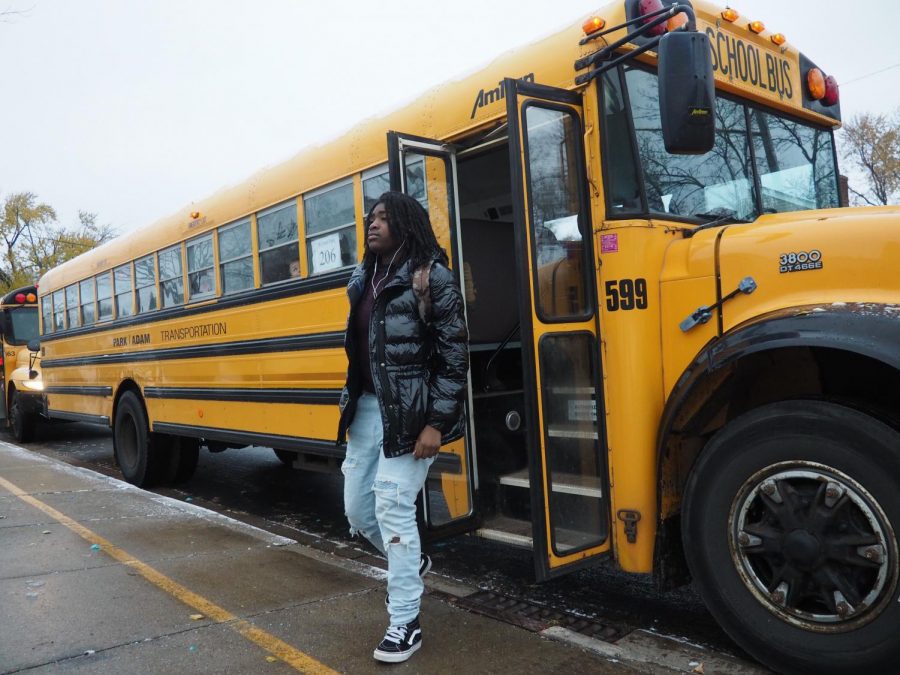Staff Editorial: Project team needs to encompass diversity in its decisions
Junior Ky’areia Malone exits the bus at the High School in the morning Nov 7. The start time for the High School is 8:20 on Monday, Wednesday and Friday, and 8:40 on Tuesday and Thursday.
November 8, 2018
This November, St. Louis Park Public Schools announced its search to assemble a group of parents/guardians, students and staff to discuss changing the start and end times of the district’s schools.
According to St. Louis Park Public Schools, they hope to revise start times for the students’ benefits.
“(The goal is) to meet the overall health, academic and social/developmental needs of all K-12 students,” according to St. Louis Park Public Schools.
St. Louis Park Public Schools’ website said meetings will occur from 4:30 p.m. to 6:30 p.m. Nov. 19, Dec. 17, Feb. 4 and March 4.. The Echo Editorial Board believes these times will be difficult for many guardians to meet, as typical work schedules disrupt these hours. Students may also find it troublesome to meet during those times due to extracurriculars. The Editorial Board believes these times will limit who participates, as only individuals with flexible schedules will be able to attend. If the district truly wants to engage all aspects of the community affected by school start and end times, they will accommodate for everyone.
Despite this, the Editorial Board asks students, staff and guardians to take advantage of this chance to have their voice heard in the community.
Later start times must be considered, particularly for the middle school, where classes begin at 7:30 a.m. According to the National Center for Biotechnology Information, later start times can affect many aspects of students’ lives.
“Later start times also generally correspond to improved attendance, less tardiness, less falling asleep in class, better grades, and fewer motor vehicle crashes,” according to the National Center for Biotechnology Information. These potential benefits should provide more than enough motivation for community members to participate. It is in the public’s interest to work towards these changes, for they could have positive repercussions throughout the community.
Additionally, the Editorial Board asks leaders of the project team to ensure they are selecting a diverse pool of people. Without diversity of thought within the team, the meetings will be useless, as not all perspectives will be reflected in the changes. Transportation, childcare, and extracurriculars are just a few of the factors that could prevent essential viewpoints from being heard through the team.
Although more effort will need to be made to ensure all opinions are represented, members of the community should take advantage of this opportunity to give input into a change that will affect them.



